In between vigorous pants-swinging during the mid-70s, Atari came up with what it thought would be yet another sure-fire arcade game success story. They named it Touch Me. A dodgy name if ever there was one. But also a little ironic as in fact few people ever did touch it because the actual game stank!
So, it was back to the drawing board and it paid off. A few years later, like a phoenix from the ashes, the idea rose again, and this time it was a success. Perhaps it had something to do with the new name, Simon (like Simon Says) and the disco-inspired design, because in reality the actual game was still pretty dubious. Milton Bradley's version followed Atari's example, having four different coloured lights that flashed in varied sequences which players had to remember and then copy. After its launch at the place du jour, Studio 54 in New York, in 1978, Simon more than earned its place in pop culture and became the must-have Christmas present that year.
The game, invented by Ralph H Baer and Howard J Morrison, was one the earliest examples of microchip technology being used outside of computer gaming. You could choose from three levels of gaming to match your level of memory prowess: Standard Simon, Challenge Simon or Group Simon. The premise was very similar with each level. Simon would light up the buttons in a 'random' sequence and the players would have to remember the sequence and play it back correctly by pressing the buttons in order. You could set the difficulty levels to control the length of the sequence and also the speed at which they flashed. But if you hit a wrong button when playing back the sequence, Simon will express its disappointment in you by blowing a soul-destroying electronic raspberry out loud. Then its back to beginning.
All perfectly normal and toy-tastic so far. But there's a twist, as the most bizarre aspect of Milton Bradley's marketing was that Simon was targeted at middle-class suburbia. Not as an educational aid for pushy parents, but as the ideal game to play after a sophisticated dinner party. But when did flashing lights and surging adrenaline levels ever go well with cheese and pineapple on sticks? All it would have done is made everyone realise they'd had one too many Babychams.
Over the years, the game's design hasn't really altered - it still looks like a smoke detector and has remained as chunky as always. But there's something about it's colourful (red, green, blue and yellow), iconic design that makes it a winner. In 1979, Milton Bradley released the eight-buttoned Super Simon so players could try to outdo each other at the same time, then later came Pocket Simon for the truly addicted. Fun for all the family! Now, pass me a pineapple stick!
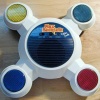

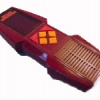
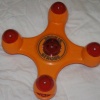
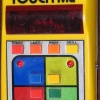

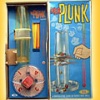


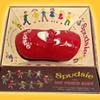
Do You Remember Simon?
Do You Remember Simon?